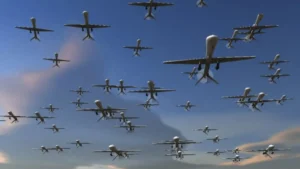Introduction:
In an era dominated by technological advancements, the Pak AirForce (PAF) has not been immune to the transformative power of digitalization. The year 2024 marks a significant milestone for the PAF as it embraces the digital age to enhance its capabilities, streamline operations, and secure its position as a formidable force in the region. This article delves into the various ways in which the PAF is applying online technologies to revolutionize its operations and maintain air superiority.
I. Digital Training and Simulation:
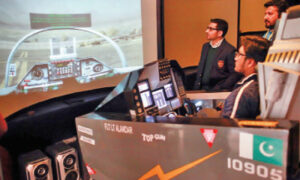
One of the key aspects of modernizing the PAF is the integration of digital training and simulation technologies. In 2024, the PAF has developed state-of-the-art virtual training programs that enable pilots to simulate various combat scenarios in a highly realistic environment. These simulations help pilots refine their skills, practice emergency procedures, and enhance their decision-making abilities in a risk-free setting.
The use of virtual reality (VR) and augmented reality (AR) has become integral to pilot training. Pilots can now immerse themselves in highly realistic cockpit simulations, allowing for a more immersive and effective training experience. This shift towards digital training not only reduces costs associated with traditional methods but also ensures that pilots are better prepared for the complexities of modern air warfare.
Must be read:
How to Find a Chief Financial Officer Job: Role and Responsibilities (2023)
II. Cybersecurity and Information Warfare:
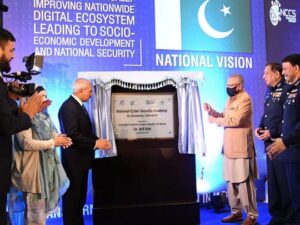
As digital technologies become more prevalent, so does the need to safeguard critical information and systems. The PAF recognizes the importance of cybersecurity in maintaining operational security and has invested heavily in robust cybersecurity measures. With the increasing threat of cyber attacks, securing sensitive data, communication channels, and operational systems has become a top priority.
Furthermore, the PAF has developed capabilities in information warfare, leveraging online platforms to disseminate strategic information, counter misinformation, and maintain a strong public relations presence. Social media platforms play a crucial role in shaping public perception, and the PAF has adapted its communication strategies to effectively engage with the public while safeguarding sensitive information.
III. Remote Maintenance and Diagnostics:
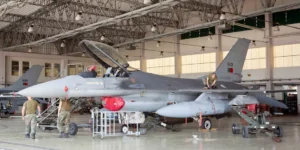
In a bid to improve efficiency and reduce downtime, the PAF has implemented remote maintenance and diagnostics for its fleet of aircraft. Advanced sensors and monitoring systems allow maintenance crews to remotely assess the condition of aircraft, identify potential issues, and even perform diagnostics without the need for physical inspection. This proactive approach to maintenance ensures that aircraft are in optimal condition, enhancing overall operational readiness.
The use of predictive maintenance analytics has also been integrated, allowing the PAF to predict potential component failures before they occur. This not only extends the lifespan of aircraft but also significantly reduces maintenance costs. Remote diagnostics and predictive maintenance have become invaluable tools in maximizing the availability of aircraft for operational use.
IV. Unmanned Aerial Vehicles (UAVs) and Artificial Intelligence (AI):
The PAF has embraced the era of unmanned aerial vehicles (UAVs) and artificial intelligence (AI) to augment its capabilities. UAVs play a pivotal role in reconnaissance, surveillance, and strategic intelligence gathering. Equipped with advanced sensors and imaging technology, UAVs provide real-time data to decision-makers, enhancing situational awareness and response times.
AI algorithms are employed to process vast amounts of data collected by UAVs, enabling the PAF to quickly analyze and derive actionable insights. This not only enhances the effectiveness of intelligence operations but also facilitates better decision-making in dynamic and time-sensitive situations.
V. Network-Centric Warfare:
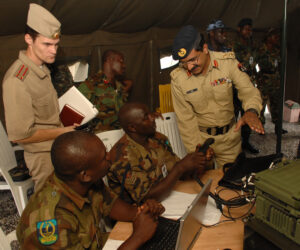
The concept of network-centric warfare has been a driving force in the PAF’s efforts to enhance collaboration and coordination among its various units. Through the integration of advanced communication systems, the PAF has created a networked environment where information can be shared seamlessly between different platforms and units in real-time.
This network-centric approach improves the overall effectiveness of joint operations, allowing for better coordination between the air force, army, and navy. Communication between aircraft, ground forces, and command centers is instantaneous, enabling swift responses to emerging threats and ensuring a more synchronized and effective defense strategy.
VI. Cloud Computing and Big Data Analytics:
To manage the vast amounts of data generated by modern aircraft, sensors, and communication systems, the PAF has adopted cloud computing and big data analytics. Cloud infrastructure provides scalable and secure storage solutions, allowing for the efficient management of large datasets.
Big data analytics enable the PAF to extract valuable insights from the massive volume of data collected during various operations. This includes analyzing flight data, mission performance, and equipment health. The ability to harness the power of big data enhances the PAF’s decision-making processes, enabling data-driven strategies for operational success.
VII. Collaborative Partnerships and International Cooperation:
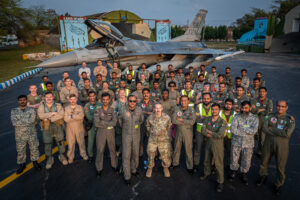
Recognizing the global nature of security threats, the PAF actively engages in collaborative partnerships and international cooperation in the digital realm. Information sharing, joint training exercises, and collaborative research efforts with allied air forces contribute to the PAF’s continuous improvement and adaptation to evolving technologies.
The exchange of best practices, technological expertise, and joint development projects strengthen the PAF’s position as a technologically advanced air force on the global stage. These partnerships also facilitate the integration of cutting-edge technologies and ensure that the PAF remains at the forefront of innovation in the ever-evolving landscape of modern warfare.



